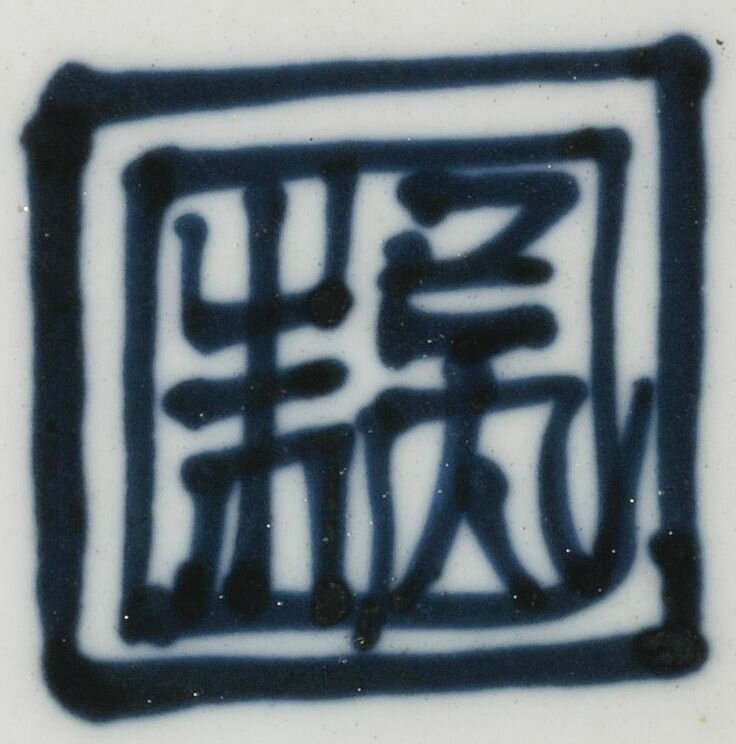A large wucai dish, Qing Dynasty, Kangxi period (1662-1722)
A large wucai dish, Qing Dynasty, Kangxi period (1662-1722). Diameter 20 3/8 in., 51.8 cm. Photo Sotheby's
Provenance: Robert Rousset, Compagnie de la Chine de des Indes, Paris, 1950s.
European Collection.
Christie’s London, 13th November 2001, lot 224.
S. Marchant & Son, London, 2005.
Note: Intricately painted with a lively historically-set banquet scene, the dish conveys the luxurious aspect of imperial life. The emperor, seated on the high central dais with a large dragon roundel on his robe, wears a satisfied countenance as he observes the lovely long-sleeved dancer who twirls at his feet. Flanked on either side by beautiful consorts, female musicians, attendants and large muscular guards, the emperor is master of all before him. The hierarchical element is highlighted by condensed perspectival view of the stairs and upswept roof tops that all lead to the emperor.
The opulence of an imperial banquet speaks for itself. Under the rules described in the Rites of the Zhou Dynasty, “when the emperor took a meal, there were twelve deep bowls with legs and twelve plates. Music was played to urge him to eat.” The lavish and lengthy descriptions of the rich variety of meats, fish and drink are impressive. This custom, with minor adjustments, remained much the same into the Han dynasty. However, the underlying weight of responsibility is also present in this scene. Laozi sums it up nicely, “Governing a big country is like cooking a small fish, poking it too much spoils the meat.” (Daodejing, chapter 60). Meaning the abundance of food is a metaphor not only for imperial generosity and an ample food supply but also an awareness that a ruler must be careful and measured in the application of laws and power, or else his country, like a hastily prepared fish, will turn out poorly.
While there appears to be no other similarly sized wucai dish so elaborately painted, dishes with banquet scenes are represented. A large dish, also without a border, displays the banquet which the Empress Xu, wife of the Han dynasty Emperor Xuandi, hosts for the Dowager Empress. Formerly in the Ionides collection the dish was sold at Sotheby's London, 18th February 1964, lot 230. Another banqueting scene depicts three clans vying for power, the strongest in the center winning by raising a large bronze ding, a symbol of authority. This dish, formerly in the Franzero Collection is illustrated in Dominic Jellineck and Roy Davids, Provenance, Beacon Press, England, 2011, p. 187.
Sotheby's. Embracing Classic Chinese Culture: Kangxi Porcelain from the Jie Rui Tang Collection, New York, 14 march 2014

/https%3A%2F%2Fprofilepics.canalblog.com%2Fprofilepics%2F1%2F0%2F100183.jpg)
/https%3A%2F%2Fstorage.canalblog.com%2F03%2F02%2F119589%2F96711876_o.jpg)
/https%3A%2F%2Fstorage.canalblog.com%2F11%2F31%2F119589%2F94773502_o.jpg)
/https%3A%2F%2Fstorage.canalblog.com%2F20%2F83%2F119589%2F94772815_o.jpg)
/https%3A%2F%2Fstorage.canalblog.com%2F26%2F72%2F119589%2F75604929_o.jpg)
/https%3A%2F%2Fstorage.canalblog.com%2F59%2F60%2F119589%2F26458628_o.jpg)




/image%2F1371349%2F20240325%2Fob_f3f664_telechargement-7.jpg)
/image%2F1371349%2F20240325%2Fob_bb86e3_telechargement.jpg)
/http%3A%2F%2Fstorage.canalblog.com%2F43%2F39%2F119589%2F129858579_o.jpg)
/http%3A%2F%2Fstorage.canalblog.com%2F66%2F03%2F119589%2F129677087_o.jpg)